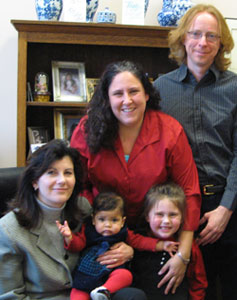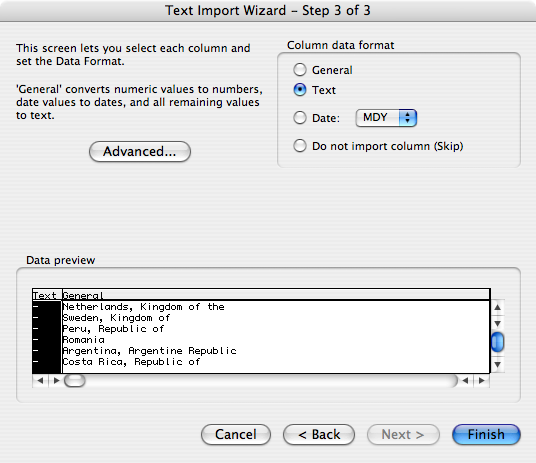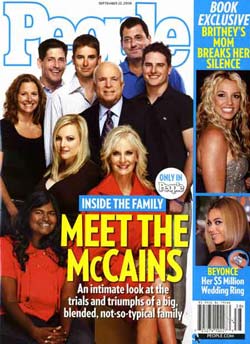I don’t know about you, but I find the results of the People magazine cover Ericsperiment (thanks for the term, Bob!) to be quite interesting. The boiled-down version of the results is: just about everyone saw what I did, but nearly everyone drew the wrong conclusions about what I was saying. (What? I’ll explain.)
First, I want to address a couple of objections that were raised. The first was: “It’s just a family photograph”. No, it’s not. It’s a magazine cover shoot. Those things are planned, directed, and executed down to the tiniest detail. If you think it’s just a family portrait, you’re either being willfully obdurate or else completely ignoring the context. That’s a mistake, because context is everything. I’ve been involved in a few portrait sessions of no public reach whatsoever, and the photographer is always telling people where to stand or sit, adjusting the angle of people’s arms, getting them to fractionally tilt heads one way or the other, shifting people an inch or two, and so on. “Just a family photo” is when the magazine gets a real family photo, taken by an amateur using a consumer-grade camera during a vacation, and puts it on the cover in a white Polaroid-esque frame at a 15-degree angle.
The second was that the image is a Photoshop job, created either by assembling individual shots or altering a group photo. Maybe, maybe not; either way, Photoshopping or a lack thereof is completely irrelevant to my point. If it wasn’t Photoshopped, then the photographer is responsible for the arrangement of the shot; if it was, then it’s the Photoshopper who bears responsibility. Either way, someone arranged the shot, and did so very badly.
So here’s what I saw: “large group” and “outsider”. That was the immediate message. Look at the cover again, paying attention to where the faces are. There’s a blob of faces above the headline text, which is the group. Then there’s a face to the left of the headline text, which is the outsider.
This is completely independent of the race, color, gender, creed, etc. of the people in the photo. The visual message is “here’s a bunch of people, plus a hanger-on”. Not because of color, which is what most people assumed I was talking about (and more on that in a minute). Because of placement.
Though I think this unlikely, you may not quite be seeing it. In that case, imagine a cover image with nine faces in the same places, only they’re of religious deities. Or pop stars. Or CEOs. Or heads of state. Or conference speakers. Or browser-team leads; heck, even browser logos. Whichever it is, imagine your favorite of each group is in the lower-left position, with all the others up above. Feel good about that? Even neutral? Still think there’s no message being conveyed by that placement?
(And if you still aren’t seeing it, maybe a comparative example, courtesy George Butler, will provide some insight.)
Now, given that one of the people has been placed as an outsider, the natural next step is to wonder why they’ve been so placed. And here, there are obvious visual differences that jump right out: like being female, having darker skin, and being younger. Already primed to ask “Why is this person an outsider?” we can find apparent reasons, and in this case they’re touchy ones. If you know the background story of the family, then there’s a non-visual one as well: that she’s adopted.
But remember, I’m not saying Bridget (the young lady in that position) has been excluded for any of those reasons. I’m saying that having been given a visual cue that she is excluded, we look for reasons to explain that exclusion. That’s exactly what most of the people who responded to my post about the cover did. All those people saw it, consciously or otherwise, and responded to the message… and then took that next step, trying to find reasons to explain the message. Then, as per each individual’s feelings and experiences, they reacted, either accepting or rejecting what they thought I was saying. Interesting, though, that so many people came to the same conclusion about what they thought I was saying. That’s evidence of a strong message, whether or not said message was intended.
And that is the failure that occurred, one which I lay squarely at the doorstep of the magazine. I might also toss in a head-slap to the campaign, if they saw the image and gave approval to use it—such pre-approval is sometimes, but not always, an option. The problem with that composition should have been obvious from the outset, and avoided. That it wasn’t makes me wonder a number of things about the magazine. Taking a teenaged girl and putting her in the outsider spot? Seriously? How callous do you have to be to do that?
Oh, and special postscript to all the people who took the time to share their pitying sorrow over how “you Americans” are so race-aware: I know it’s a tragedy, but remember, we’re still a young country and have not had the same lengthy maturation time you’ve enjoyed. So please, try to remain patient with us while segregation, anti-immigrant violence, race riots, tribal warfare, and ethnic cleansing uniquely wrack our poor, blighted country, and continue to hope that one day we’ll join the rest of the world in the tranquil harmony that so characterizes your enlightened societies.


